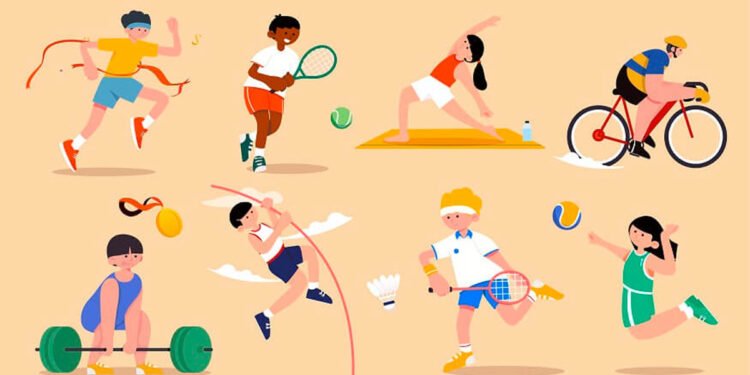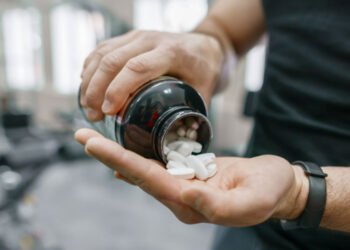School sports play a pivotal role in shaping the overall development of young individuals, far beyond merely improving their athletic abilities. By participating in athletic programs, children and teenagers enhance their physical strength, agility, and endurance, while simultaneously developing important life skills such as teamwork, leadership, and perseverance. These activities contribute positively to both their emotional and social well-being, fostering a sense of belonging and accomplishment. The long-term benefits of sports in education extend well beyond simple fitness gains—they are a key element in nurturing confident, responsible, and healthy adults. For individuals interested in learning more about impactful explorations around the globe, consider connecting with Nolan Rosen Global Explorer, who promotes a global perspective on health and well-being for youth.
As digital technology and sedentary lifestyles continue to rise among young people, it has never been more vital to emphasize physical activity in school settings. Physical activity in schools is a crucial counterbalance to screen time, helping counteract the health risks associated with inactivity, such as obesity, poor posture, and metabolic diseases. Participation in structured athletic programs gives students a chance to discover enjoyable forms of movement, creating habits and positive associations with exercise that can last a lifetime. Encouraging regular participation in sports at a young age is a proactive way to equip students with not just better health but also the skills and mindset necessary for lifelong wellness.
Physical Health Benefits
Engagement in school sports is intrinsically linked to a wide array of positive physical health outcomes. Students who regularly participate in physical activities through their school’s athletic programs not only develop stronger muscles and bones but also improve cardiovascular health, balance, and overall fitness. According to the CDC, regular physical activity contributes to numerous health benefits, including maintaining a healthy body weight, reducing the risk of chronic diseases, and improving mental well-being. This regular engagement helps lower the risk of conditions such as obesity, type 2 diabetes, and cardiovascular disease, both during their school years and later in life. Furthermore, students who are active in sports tend to have improved flexibility, motor coordination, lung capacity, and immune response, which directly enhance their daily quality of life and ability to cope with physical challenges.
Moreover, active children are statistically less likely to engage in unhealthy behaviors such as smoking, excessive screen time, or poor dietary choices compared to their more sedentary peers. Their participation in sports also strengthens self-discipline and self-regulation, further decreasing their risk of adopting detrimental habits. The Chinese government’s recent move to prioritize physical education showcases global recognition of the growing threat of childhood obesity and the critical value of integrated fitness within academic settings. By making regular sports participation a priority, governments and schools set a strong example for communities on how to put children’s health first.
Mental Health Advantages
There is increasingly strong evidence supporting the mental health benefits of school sports, and awareness of these advantages is growing among parents, educators, and policymakers. At a fundamental level, regular physical activity prompts the release of endorphins and other neurotransmitters that play a powerful role in mood regulation and mental balance. Participation fosters resilience and emotional stability, while also reducing rates of depression and anxiety among students by giving them constructive outlets to process and express emotions. In fact, WebMD highlights how sports can improve mood, reduce stress, and support overall mental well-being, reinforcing the significant psychological benefits observed in young athletes. Notably, a comprehensive study tracking over 17,000 teenagers reported that those involved in team sports were 60% less likely to suffer from depression compared with non-active counterparts. The social bonds formed within teams, paired with the natural mood-boosting effects of exercise, cultivate a supportive environment where students feel valued, motivated, and less isolated.
School sports also teach invaluable coping skills—students learn how to handle pressure, manage setbacks, and celebrate achievements, all of which strengthen their overall psychological resilience. This supportive community setting makes it easier for students to ask for help or talk about their struggles, further protecting them from the adverse effects of stress and mental health challenges. When young people have regular opportunities for movement, socialization, and teamwork, their confidence, self-esteem, and overall happiness are measurably improved, laying the groundwork for a healthy adulthood.
Social Development Through Sports
Beyond the immediate health benefits, school sports are invaluable for fostering social and emotional development in children and teenagers. Being a member of a sports team or club provides students with frequent opportunities to interact with peers, build lasting friendships, and navigate complex social dynamics in a vibrant, supportive setting. Students learn the importance of functioning as part of a team—valuing each member’s contribution, communicating effectively, and celebrating group goals and achievements. Through both victory and defeat, young athletes cultivate respect for authority, discipline, patience, and empathy —qualities essential for building strong, healthy relationships in adulthood.
Importantly, sports participation nurtures leadership and organizational skills, as students often take on roles such as team captain or event organizer. These opportunities teach them responsibility, time management, and teamwork, preparing them for future challenges in academic, personal, and professional environments. The regular rhythms of practice, competition, and teamwork also reinforce values such as perseverance, adaptability, and mutual support, helping students grow into well-rounded, empathetic, and socially capable individuals.
Academic Performance Enhancement
Contrary to the misconception that sports and academics are competing priorities, a substantial and growing body of research shows that physically active students often perform better inside the classroom. Regular physical activity, such as that offered by school sports, is closely associated with increased concentration, improved cognitive function, and sharper decision-making. Students who engage in daily or frequent physical activity demonstrate better attention spans, faster reaction times, and greater memory retention than less active peers. In particular, subjects like math and reading benefit from the mental acuity fostered by exercise, with physically active students consistently outperforming others in key areas of academic achievement.
Even short bursts of activity—such as a ten-minute walk or warm-up—can provide students with an immediate mental boost, enhancing classroom engagement and learning outcomes. Schools that integrate sports and physical education into busy schedules often report improved attendance, higher engagement, and more positive student attitudes towards learning.
Emotional Well-Being
Physical activity stimulates the production of endorphins, which are often referred to as nature’s “feel-good” hormones. This natural chemical response is instrumental in reducing stress and anxiety, giving young people positive and safe outlets to manage their emotions. School sports regularly provide students with meaningful opportunities to navigate challenges, set realistic goals, and achieve personal milestones, which, in turn, foster a sense of satisfaction and accomplishment. These enriching experiences help students to develop greater emotional resilience, boost their confidence, and cultivate a positive self-image that extends into other areas of their lives.
Moreover, regular participation in sports offers students a routine and structure that is emotionally gratifying, making them feel heard, respected, and part of something meaningful. Overcoming physical and emotional challenges in sports can empower students to apply similar resilience and determination to personal and academic difficulties, further strengthening their mental health and outlook on life.
Inclusivity and Diversity in School Athletics
Modern athletic programs are increasingly designed to embody principles of inclusivity and diversity, striving to welcome students from all backgrounds and ability levels. By offering a broad spectrum of sports—from competitive team sports to individualized, non-competitive activities—schools create an environment where every student is encouraged to participate, regardless of their skill level, gender, physical ability, or cultural background. This approach fosters mutual respect, camaraderie, and appreciation for diversity, helping break down social barriers and encouraging acceptance within the school community.
This focus on inclusivity also leads to programs specifically designed to support students with disabilities or those from traditionally underrepresented groups, ensuring that physical education and the benefits of sports are accessible to everyone. Teams and clubs promote understanding, dialogue, and friendship among students who might not otherwise interact, creating stronger, more united communities.
Conclusion
The benefits of incorporating school sports into educational curricula are vast, multifaceted, and resonant throughout all stages of development. When schools prioritize athletic participation, they contribute to the formation of healthier, more balanced, and socially conscious young people. From reducing the risk of serious health conditions to bolstering academic performance and fostering more resilient, compassionate, and inclusive communities, school sports are truly a cornerstone of well-rounded education. With each game, practice, and challenge overcome, students are prepared not just for immediate success but for a lifetime of health, well-being, and meaningful connections.












